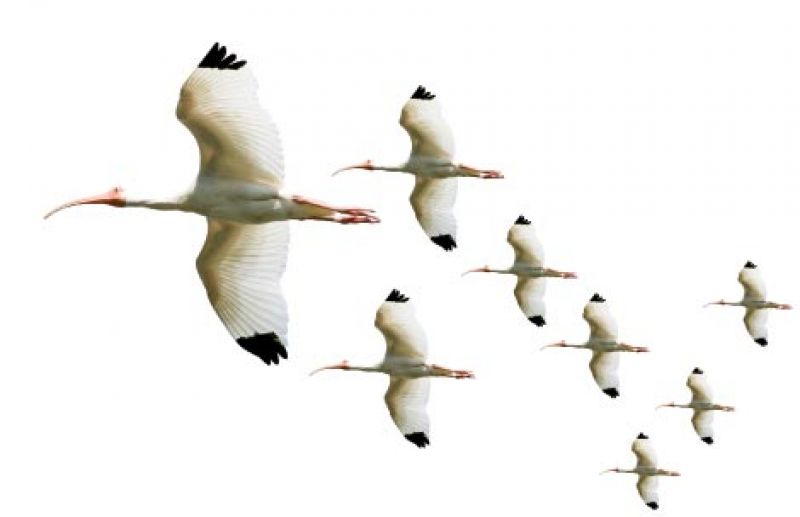
I am a native of Charleston who first saw the light of day on Calhoun Street, at Roper Hospital, in the sultry month of September, at the height of hurricane season. This small accident of geography produced a giant imprint, for Charleston and the Lowcountry are as much a part of my DNA as my lazy eye and cowlick.
To have been born and raised among such rampant beauty—natural as well as man-made—is to be spoiled for life. It is to view the world through an aesthetic prism that has few comparables. It is to inherit a seat at a table set for a feast for the senses. And it is to be forever prejudiced, for after constant exposure to this rare symphony of dazzling light, ravishing color, and exquisite geometries, few places ever quite measure up to home.
Some think, and rightly so, that Charleston and the Lowcountry are a last bastion of civility and good manners. They are that, and more. Charleston contains all the contradictions of a dream: beneath our decorous surface is a sensualist’s domain. We are the garden of Eden after the fall. We are the lush jungle and the panther, conjured by the brush of Henri Rousseau. We are the beast and the beauty, the wild rose and the dilapidated tombstone, the old brick wall and its chink.
The indoctrination of a Lowcountry voluptuary begins in the nursery before the onset of speech or consciousness. It is olfactory, tactile, auditory, visual, and gustatory. My earliest memories catalog a baptism of the senses: the house on Water Street, an open window, the oscillations of the electric fan. Grits on the stove for supper along with sweet creek shrimp, followed by sugar cane for dessert. The tall sugar canes propped up in the kitchen and the machete for cutting them. The thrashing of palmetto fronds against the window panes in the breeze. The commingled scents of tea olive and pluff mud, jessamine and paper mill. The lyricism of voices, inflections. Mosquito netting. The fan’s drone and the mosquito’s vertigo.
No wonder a Lowcountry birth confers upon one more than an address: it’s an identity forged from this matrix of rivers, marshes, maritime forest, and urban antiquity. Early on, a native absorbs the rhythm of long, hot days and witnesses the fantastic fertility of the place, where wild cabbage palmettos, scrub oaks, yucca, bay laurels, wax myrtles, mosses, prehistoric alligators, herons, terrapins, and cormorants still flourish. Here, wildness is still honored; wilderness still possible. Bobcats, horned toads, red-tailed hawks, sea oats, sand dunes, and fiddler crabs are the distinguished faculty in this seductive, sensory curriculum.
Though human-made, the antebellum city equally seduces, both with its sweeping panoramas and small vignettes. The old city’s roofline, quaint and fanciful, as though cut by a silhouettist’s scissors. The Battery sea wall and its views onto the harbor and old forts. Cargo ships and sailboat regattas. Languid tiger cats drowsing on slate sidewalks. Magical downspouts. A stone Buddha sitting under a marble urn full of red geraniums. Fluting Pans and naked cherubs in fountains. Hidden alleys, serpentine streets. The briny fragrance of the ocean. Music, wafting in the squares. The smell of peanuts, boiling all day in a heavy pot. Tropical rain pelting a tin roof. The faint swoosh of wing beats as a flock of ibis flies over the High Battery at dusk. The paint box of colors on stucco houses and the lacework of old wrought-iron gates and balconies.
The gustatory pleasure of a tomato grown on Edisto Island, an onion grown on Wadmalaw, a flounder caught in Sand Creek, an oyster pulled from its local bed. And the delicious place names that abound: Huger, Hasell, Legare, Prioleau, and Vanderhorst among the venerable old city streets; Pocataglio, Winyah, Toogoodoo, Jehossee, and Leadenwah marking the Lowcountry’s rural lands and rivers.
Whenever people from Off ask me about why I live here, I always reply that it’s the proximity of culture to nature that makes this place so remarkable. A treasure trove of 18th- and 19th-century architecture and semitropical gardens flourish within what remains—and, thanks to an especially visionary local conservation ethic, much does remain—of a coastal jungle. The scent of a tidal creek, the slant of afternoon light on a piazza, the tang of salt air, a glimpse of a dolphin in the river or of ornate scrollwork on an old column: together they amount to a banquet for the senses. If this is ruination, it is both rare and sweet. Bring it on.